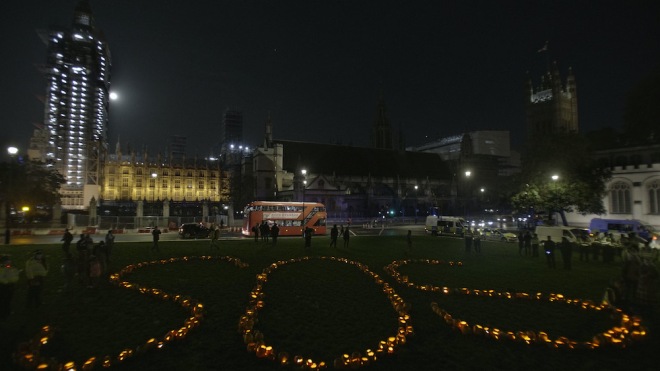There are lots of things we have missed this year: processions of micro-mournings. Thankfully there have been chances to cherish what has persisted, even grown, silver-edged, into the vacuum. The reassuring rasp of spades striking the soil; the murmur of conversations rising on the pull of muses and falling with the quickening of breaths; the nose-feel of fresh soil.
Our fork prongs are inching us forwards, to the east of Raspberry Row (once the site of our raspberries, now no longer, and currently in the midst of a renaming row), an area that has been under turf since the old Manor House was finally flattened there at the end of the War. Beside us, at a social distance, Maya, Charlie, Rhys and the other mulchers are overlaying with compost, still steaming in this cool day of light. Before our eyes, the new strawberry beds are becoming.
As gardeners we carry in our hearts the vison and memory of beds in their luxuriant peak, a picture of health whose vibrancy fattens every line of sight: the fullness before the wane, or harvest. Yet the antithesis of this moment is perhaps the most satisfying view: the dark mould, cleaned of any trace of plants. Perfect, promising the earth. The blank canvas compelling us to start afresh, to grow back better. But for such a chance in the world beyond the garden.
Across from the new strawberry beds, the still pristine black strips of the Spring Field are, if you look closely – no, closer than that, on your knees now – pricked slightly by the emerging tips of overwintering onion shoots, a deep green constellation in the night-ground. Now a shadow of its former self, in the season this was the Squash Bloc, as dictated by the Spring Field’s particular iteration of our Ten Year Field rotation. Shannon and Sam deer-fenced the entire area, which gave the curious sense that we were trying to keep the rampant tendrils in rather than keep our resident muntjac family out. Getting through the fence was like gatecrashing a raucous festival: Apprentice Emma had curated a selection of of luridly photogenic – or in contemporary parlance, instagrammable – cultivars this year. Our usual offering of “Jack Be Little” and our very own “Daughter of Hawkwood”, joined by “Uchiki Kuri”; “Fictor”; “Black Futsu”; “Burgess Buttercup”; “Tromboncino”; “Thelma Saunders”; an anonymous Jamaican variety; and plenty of “Jack O’Lantern” Halloween carving pumpkins…

…Too many, if I am honest, for something of modest culinary value and a marketing window of a mere fortnight. But they looked great, and, well, we did it for the kids. This year my thoughts returned often the Peanuts cartoon strip, and Linus’ faithful vigil at the pumpkin patch at Halloween, awaiting the Great Pumpkin, a mythical vegetal creature who each year chose the “most sincere” pumpkin patch to appear at, and bestow gifts and blessings on all present.
We all need something to believe in, and I was half-tempted to join this pumpkin cult, until our Halloween Hope came from another quarter. Members of our union, the Land Workers’ Alliance, were plotting a covert action to coincide with the second reading of the Agriculture Bill in Parliament. There is some good stuff in the “Ag Bill”, but, after a Lockdown year which has prompted the public to re-value food and food producers on many levels, it is truly shocking that the government has blocked any attempts to maintain basic environmental, health and welfare standards for food imports, post-EU. It’s a food fight, and the next shot from our side was our surplus pumpkins joining hundreds of others in a large, lantern-lit “SOS” [Save Our Standards] on Parliament Square. An awesome vista, a reminder of the power of creative collective action even in these times, and, if the Great Pumpkin does exist, surely it elected this as the most sincere pumpkin patch of them all.
As we enter the certainty of winter in a deeply uncertain year, we have plenty of squash still in store, holding their summer goodness fast. And then there’s the stores outdoors, from which, twice a week, the trainees, the Harvest Hands, and the Old Hands, dig parsnip, artichoke, winter radish; pluck kale and winter salads. O vegetables of comfort and joy.
For good food will get us through this darker-than-usual winter. That, and fellowship: connecting with people near and distanced. And a sense of wonder, so that things glitter; and warmth to hold us through the bitter hardness of this season. All the things, in fact, that have got us through this strange hard year. At the end of this tunnel there is a place of light. The land of Spring. A land of immunity and resilience. A land of growing back better: better food and farming. A Green New Deal.
After the food, the feast, the festival, the wake, always the washing up. By a quirk of fate, the year we succeeded at growing loofahs, a plant whose fruit make great washing sponges, became the year that became the Year of Soap and Suds. Another chance to clean up, start afresh.


